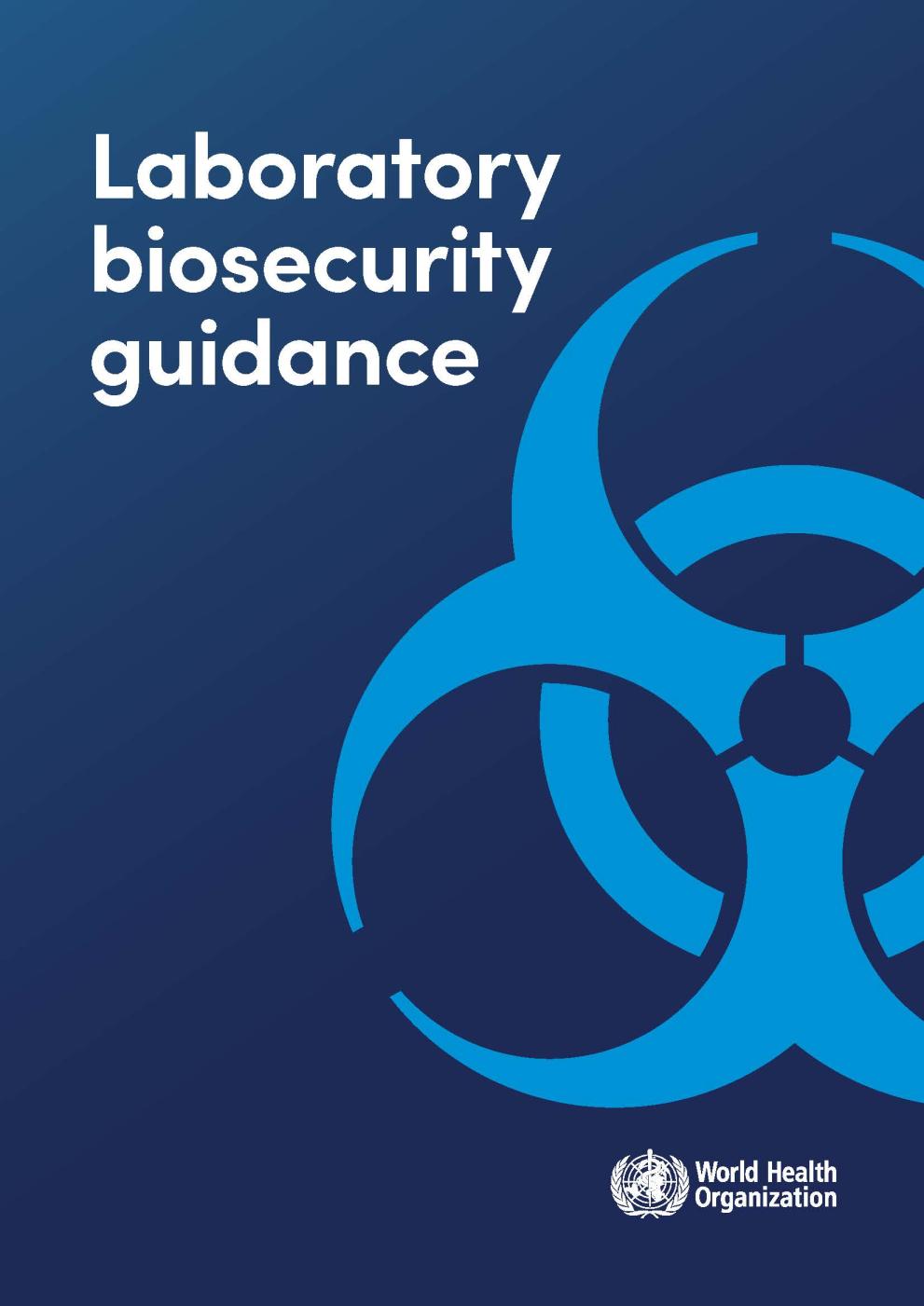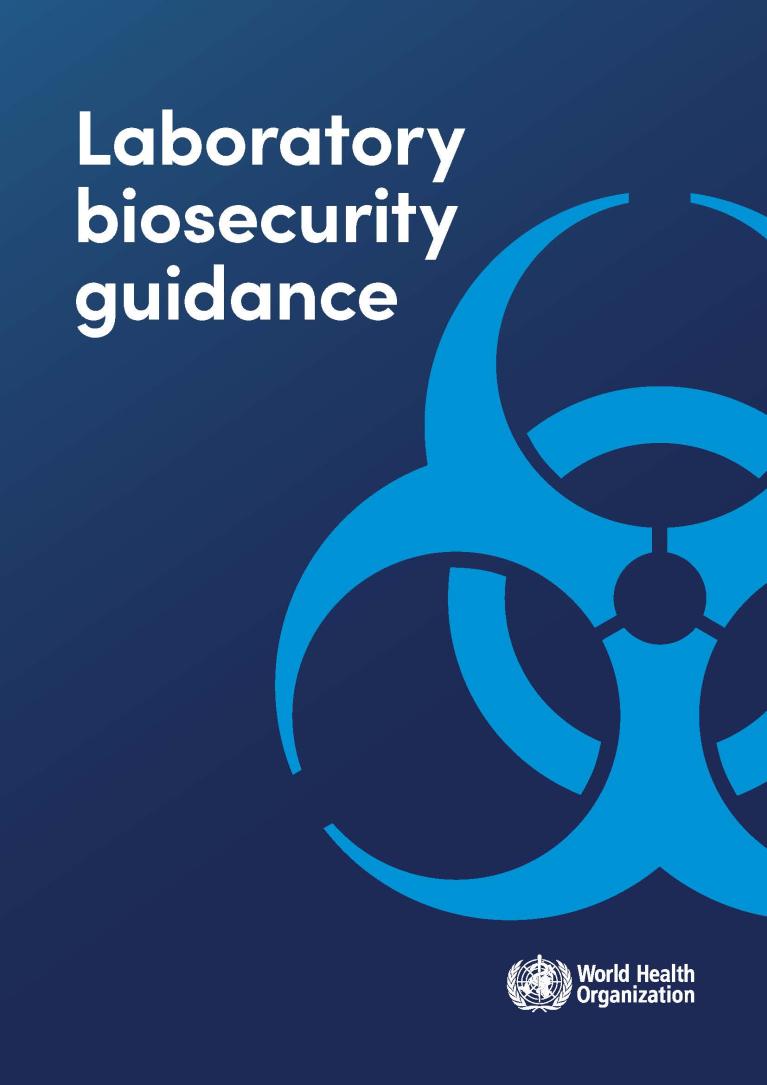
Biomedical research and diagnostic tools play a crucial role in improving human health and combating infectious diseases. However, the foundation for these advancements lies in the handling, transferring, transporting and storage of infectious pathogens within laboratory settings. The intrinsic risks of working with biological agents are not only of a biosafety nature, such as exposure or unintentional release, but also of biosecurity, which includes the theft, misuse, or intended release of biological material.
To prevent biosafety and biosecurity threats, it is of outmost importance that laboratories ensure the safe and secure handling of biological material and security sensitive information. Furthermore, when institutions that accommodate high-consequence research (e.g., carrying out dual-use research of concern, using dual-use technology or tools, and working in emerging disciplines or technology), it is important to manage high-consequence research and security sensitive information effectively in their facilities. Implementing effective risk mitigation measures will enable scientific progress while minimising risks to the laboratory personnel, community and the environment.
Enhancing the protection of laboratory operations against biosecurity threats
As part of its mission to advance CBRN risk mitigation and strengthen security and safety worldwide, the EU CBRN Centres of Excellence has supported the development of the updated World Health Organisation (WHO) Laboratory biosecurity guidance to enhance the protection of laboratory operations against biosecurity threats.
The WHO Laboratory biosecurity guidance (2024) aims to provide guidance on ways to work safely and securely with high-consequence material and biosecurity-relevant material, and how to build capacity at Laboratory, institutional and national levels to address biological risks.
A focus of the Laboratory biosecurity guidance is the biosecurity risk assessment, the strengthening of the review function of the institutional biosafety committees and the proposal of a two-tier system of overseeing work with high-consequence material.
The revised Guidance has been developed by the WHO Laboratory Biosafety and Biosecurity Programme in consultation with international experts, who played a significant role in providing input and insights to address biosecurity needs at the laboratory, institutional, and national levels.
The EU CBRN CoE supported the Guidance’s development with contributions from Dr Sabai Phyu, On-Site Technical Assistance expert for the Southeast Asia Regional Secretariat, as reviewer.

The World Health Organisation (WHO) Laboratory biosecurity guidance is meant to enhance the protection of laboratory operations against biosecurity threats.
The publication aims to provide guidance on ways to work safely and securely with high-consequence material and biosecurity-relevant material, and how to build capacity at institutional and national levels to address biological risks. A focus of the Laboratory biosecurity guidance is the biosecurity risk assessment, the strengthening of the review function of the institutional biosafety committees and the proposal of a two-tier system of national oversight.
The EU CBRN CoE supported the Guidance’s development with contributions from Dr Sabai Phyu, On-Site Technical Assistance expert for the Southeast Asia Regional Secretariat, as member of the WHO technical advisory group on biosafety.
WHO Laboratory biosecurity guidance & biosafety manual
The WHO Laboratory biosecurity guidance is the update of the WHO laboratory biosecurity guidance published in 2006. The publication has been revised to enhance the protection of laboratory operations against biosecurity threats.
The Guide complements the WHO fourth edition of the Laboratory biosafety manual (2020), which takes a risk- and evidence-based approach to biosafety of laboratory work with biological agents.
Both documents aim to enhance the biological risk management and prevent biosafety and biosecurity incidents.
Supporting biosafety and biosecurity in 64 partner countries
The European Union, Chemical, Biological, Radiological, and Nuclear Risk Mitigation Centres of Excellence EU CBRN CoE supports the strengthening of biosafety and biosecurity measures in cooperation with its 64 partner countries.
Currently, the EU CBRN CoE has seven projects ongoing to prevent biosafety and biosecurity threats, addressing issues ranging from front line response measures, to public health laboratories, waste management, or risk associated with environmental and climate change:
- PROJECT 100: Strengthening of Front Line Biosafety and Biosecurity Measures in South East and Eastern European Region
- PROJECT 099: Strengthening Biosafety and Biosecurity capabilities in East and Central Africa
- PROJECT 098: EMED- Strengthening CBRN medical emergency preparedness and response in Southeast Asia
- PROJECT 093: STRONGLABS 2.0 - Reducing biological risks by strengthening Public Health Laboratories
- PROJECT 092: MediLabSecure III Preventing biological risks increased by environmental and climate change in the Mediterranean, Black Sea and Sahel regions by strengthening a structured, inclusive and institutionalised One Health approach
- PROJECT 091: Strengthened chemical and biological waste management capacities in the North Africa and Sahel region
- PROJECT 081: BIOSEC Enhanced biosecurity in Southeast Asia
Visit the EU CBRN Risk Mitigation page to learn more about the EU CBRN CoE and other EU flagship initiatives strengthening CBRN safety and security worldwide.
Details
- Publication date
- 5 July 2024
- Authors
- Service for Foreign Policy Instruments | Joint Research Centre
- CBRN areas
- Bio-safety/bio-security
- Protection of material/facilities
- Public health impact mitigation
- Safety and security
- Waste management
- CBRN categories
- Biological
